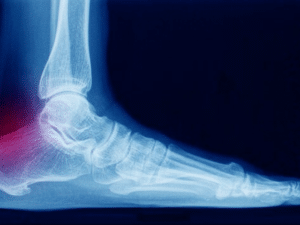Achilles Tendon Surgery
Achilles Tendon Surgery in Iran
Best Achilles tendon surgery hospital in Iran
A large number of Iranian and foreign patients are going under Achilles tendon surgery in Iran each month. Achilles tendon surgery in Iran is on top of the middle-east regarding its skilled specialists and surgeons.
Here are the best hospitals for Achilles tendon surgery in Iran:
- Treata Professional Hospital
- Gandi Hospital
- Moheb Mehr Hospital
Achilles tendon surgery cost in Iran
There is a significant difference between the cost of Achilles tendon surgery in Iran and other countries. The most important factors for the low price of it in Iran are:
- A large number of Achilles tendon surgery hospitals in Iran.
- A large number of applicants for Achilles tendon surgery in Iran.
Achilles tendon surgery cost in Iran varies depending on the Achilles tendon surgery and the hospital. An average cost of Achilles tendon surgery in Iran is
Achilles tendon surgery cost in Iran in comparison with other countries
This surgery costs $ in the U.S., $ in Europe, $ in Thailand and $ in Turkey.
Best Achilles tendon surgery surgeon in Iran
A lot of orthopaedic surgeries are being performed each year in Iran. Experienced Iranian doctors with an excellent record are performing the operations.
One of the most important factors for choosing a good surgeon for Achilles tendon surgery in Iran is a doctor has done many Achilles tendon surgery.
You can find the best doctors for Achilles tendon surgery in Iran on our website by following their different experiences.
Why should you travel to Iran for an Achilles tendon surgery?
Many patients travel to Iran for Achilles tendon surgery. One of the reasons for this matter is Iranian specialists and surgeons who have high surgery success rates.
- Low cost of Achilles tendon surgery in Iran
- Low cost of accommodation in Iran
- Well experienced doctors
- The high number of Achilles tendon surgery in Iran
Achilles tendon surgery centres accordant with today’s European standards are performing the highest quality operations in Iran. Another reason for Achilles tendon surgery in Iran is its lower cost compared to other countries.
How long should I stay for Achilles tendon surgery In Iran?

About Achilles Tendon Surgery
The Achilles tendon is the strongest and thickest tendon in the body that connects the muscles in the back of the calf to the heel bone. It’s the largest tendon in the body and helps people to walk, run, and jump. Tendon rupture is a condition which affects the back of the lower leg. It is due to the sudden, strong force. It mainly occurs when a patient suddenly moves faster or pivots on foot. It can affect walking ability. It is more common in men and usually occurs at the age of 30-40 years. A ruptured Achilles tendon can cause pain and swelling near the heel. Patients may not be able to bend their foot downward. Even in mild cases, it can take weeks to months of rest for the tendon to repair itself. Orthopaedics can take care of this rupture with a simple procedure called Achilles tendon Surgery.
Types of Achilles Tendon Surgery
- Open surgery, the surgeon makes a single large incision in the back of the leg.
- Percutaneous surgery, the surgeon makes several small incisions rather than one large incision.
Recommended for
Patients with ruptured Achilles tendon
Before Achilles Tendon Surgery
The surgeon takes a medical history and asks for ultrasound, X-rays, or magnetic resonance imaging (MRI). Smoking should be stopped a few weeks before and after the surgery. Smoking will slow down the healing process. Patients should stop taking Aspirin, anti-inflammatory medicines and herbal supplements before the surgery since these medicines increase the risk of bleeding. They should not eat or drink after midnight the night before the surgery.
During Achilles Tendon Surgery
The patients undergo general anaesthesia during the procedure. The surgeon makes an incision through the skin and muscle of the calf and makes an incision through the sheath that surrounds the tendon. The parts of the damaged tendon are removed or the rip in the tendon is repaired. Another tendon is removed from the foot and is replaced with a part or all of the Achilles tendon. The incisions are then closed with stitches.
Recovery
Patients can go home the same day or the day after the procedure. They should keep their leg elevated for a few days after the surgery. They should return to the healthcare provider to remove the stitches. Patients may feel some pain after the procedure. The surgeon may prescribe some painkillers and antibiotics. The tendon will slowly get stronger as the patient recover. Patients will need to wear a cast or walking boot for 6 to 12 weeks after surgery. At first, it may be set to keep the foot pointed downward as the tendon heals. They may be able to put weight on the affected leg after a few weeks.